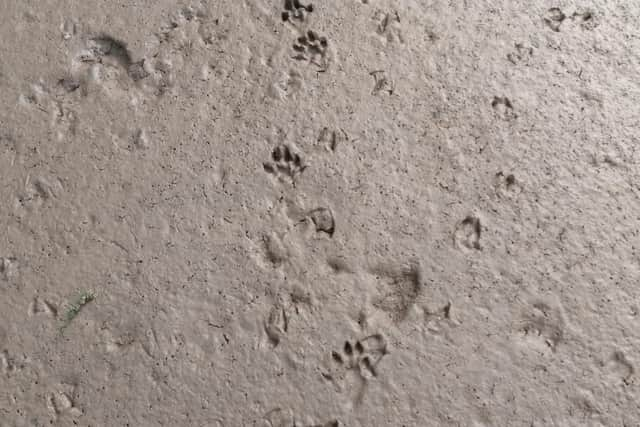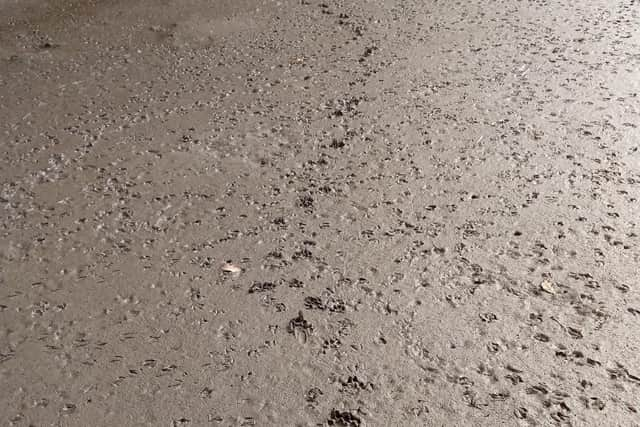Footage of otter grappling with fluke on the River Foyle in Derry
and live on Freeview channel 276
Otter tracks in the glar on the east bank of the river at Prehen were also evident, a good sign that the waterway is in a healthy state.
In the video footage the animal can be seen feeding on a fluke or flounder - a type of flatfish common in the Foyle.
Advertisement
Hide AdAdvertisement
Hide AdAccording to Habitas, the presence of the otter - madadh uisce in Irish or lutra lutra in Latin - is a good indicator of water quality.


"They need clean, unpolluted water with a large and varied supply of food. Dense, undisturbed areas of bankside vegetation are also essential to provide cover when the animal is resting during the day and for breeding purposes," says the organisation.
Otters are furtive, mostly nocturnal creatures although they can be spotted during the day in the Foyle if you are lucky enough.
Habitas says 'the Fermanagh lakes and the rivers associated with Lough Foyle are good areas to look for otters'.
Advertisement
Hide AdAdvertisement
Hide Ad"The otter occurs throughout Northern Ireland in freshwater and coastal habitats. The actual number of otters present is not known but a recent survey recorded signs of otter presence in 65 per cent of sites surveyed.


"Otter populations in Europe declined rapidly from the 1950s onward and by the mid-1970s the otter was seriously endangered in many countries. The decline was due mainly to pesticide use, water pollution, destruction of habitat and hunting. The otter population in Northern Ireland did not suffer this serious decline and continues to remain in a healthy state," it adds.
The species is among several mammals that call the River Foyle their home.
Seals, harbour porpoises and dolphins have also been reported in the river over recent weeks.